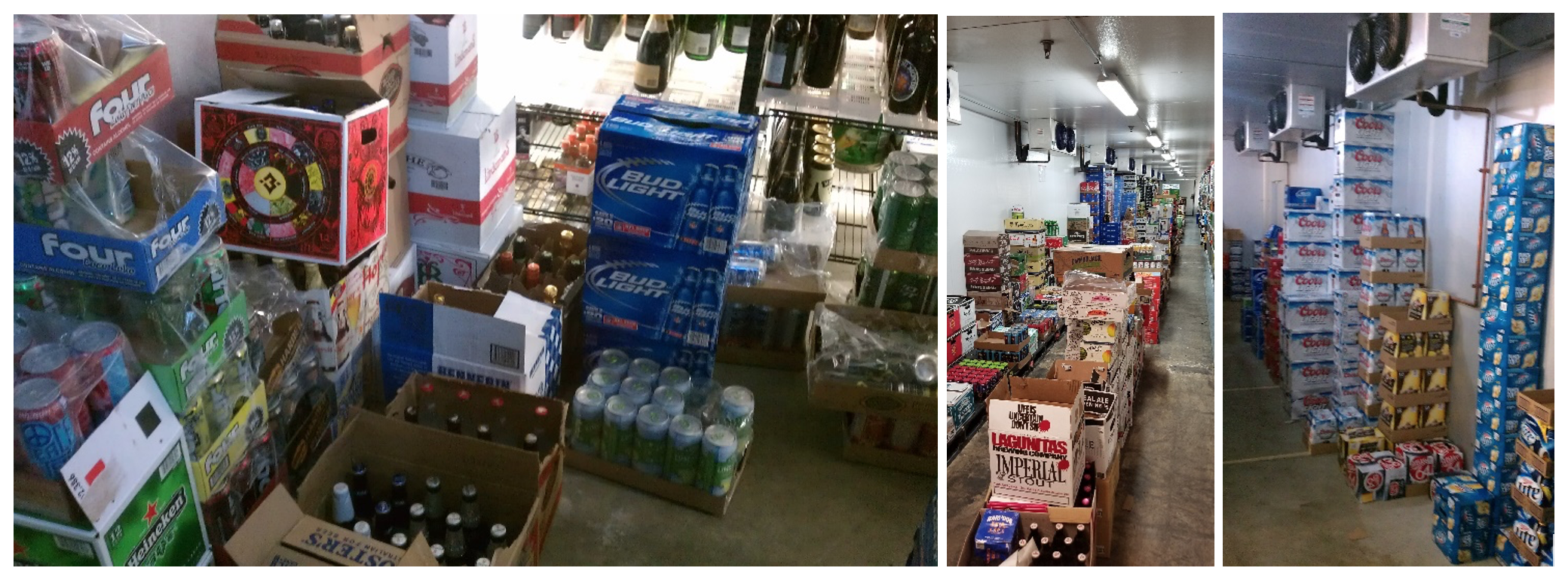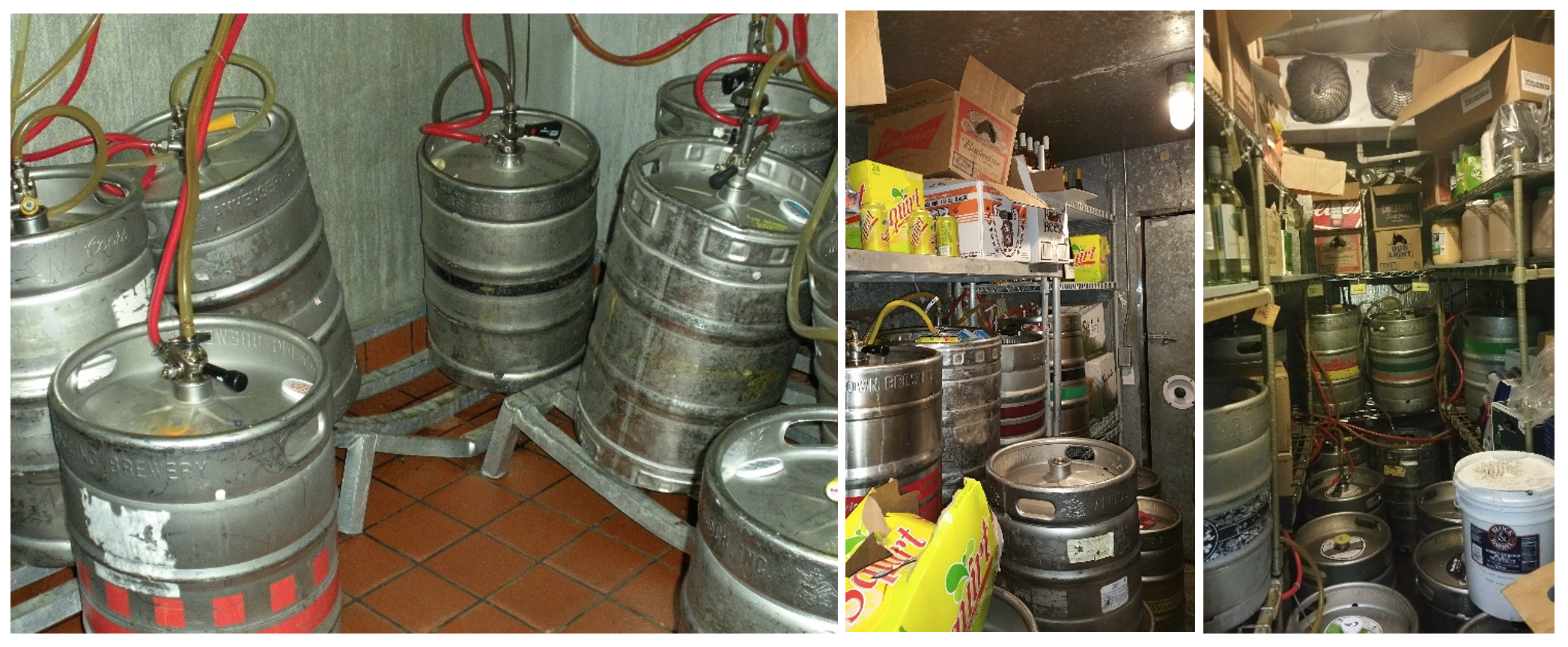
30 Years of Cooler Concepts: A Conversation with Bill Dunnett
It's hard to believe, but Cooler Concepts has been around for 30 years. That's three decades of helping operators realize the benefits of a clean, efficient, well-organized keg room using shelving and other accessories that will last over time. In fact, in all of our 30 years, we have not had one warranty claim to replace our shelving.
Let's say that again. In 30 years, we have never had to replace one of our keg racks.
To celebrate this milestone and learn more about our company's origins and product lines, we sat down with Cooler Concepts founder and CEO Bill Dunnett to get his thoughts on this milestone in the beverage industry.
Can you tell us how the company got started? Every company has an origin story, so what is yours?
I started my company while working for a beer distributor in a southwest Chicago suburb in 1994. In my duties as a deliveryman, I would always see what I call peaks and valleys storage in a beer cooler. Lots of name-brand products (peaks) and oddball brands (valleys) next to them. Every product had its own row in the cooler, making delivery much more time-consuming.

With every delivery, I would have to move items in order to rotate the older product to the top. While working on Christmas Eve in 1994, I dropped a keg from four feet in the air onto my foot. I called it childbirth in one second.
Why keg shelving? There are so many things to consider in foodservice, so what drew you into the walk-in, besides having that keg fall on your foot!
I have always been anal -- ADHD, whatever you call it. I like things organized. Keg shelving just seemed to fit my ends to a mean. After seeing bent, broken, and leaning crappy aluminum shelving in the beer coolers I worked in, and what some really old units can look like, this just seemed a better way. Kegs need to sit on a flat surface, and the platform of aluminum shelving doesn’t allow for easy storage. Kegs can even tip over due to their inherent design.

Were there any particular end users you had in mind when you set out to solve the challenge of keg room organization?
Early on, I looked for ways to help the mom-and-pop places that could really use a safer and more workable walk-in beer cooler. The chain work came later after we were able to help a local Buffalo Wild Wings franchisee, and we shared those results with other chains and consultants.
Tell us a little bit about Beer Math. Why is it so important?
Beer Math evolved over a period of studying the tendencies of bars and restaurants in their ordering process and their actual usage for one week time. What we found was there were glaring differences between what they needed and what they were storing at the end of the week. We found that there is a 1/3:2/3 rule with all bars up to 30 taps. The faster movers (1/3) will use a significantly more amount of beer, whereas the slower moving products (2/3) will do what I call try to catch up.
We take the total number of ounces poured in a 1-week timeframe (draft beer analysis) and digest that data. My team then uses that data to design a much more compact walk-in beer cooler based solely on their specific needs.
We found that we could reduce a beer cooler's size up to 40 percent and it could hold enough product for one week. Imagine being able to take a projected 10-foot by 12-foot beer cooler and reduce it down to an 8-foot by 10-foot footprint. That is a 40-square-foot savings (that makes space) for a bigger oven, range, or other types of equipment.
I did a draft beer analysis for a chain based in Tampa, Florida and what I found was there were 30 extra kegs in storage that they did not need over the weekend. If they had reduced their inventory by those 30 kegs, it would have added $4,500 to their bottom line every week.
Partnerships are very important in the food and beverage industry. Can you tell us a bit about your reps?
The rep network is huge in getting the word out about Cooler Concepts and how it makes every project better. People think I go out and sell when I am in the field on territory trips. I just share information with dealers, consultants, and end users to show there is a better way that has not changed in almost 30 years. The reps also realize that is their main focus as well – educating the people in their network.
You work in a lot of high-volume settings like stadiums and arenas. Can you talk about the importance of keg shelving as beer sales increase in volume?
When we worked at Ford Field in Detroit, Michigan years ago, I read that they went through almost 800 kegs at the very first event. Venues need a systematic solution in order to work safely and efficiently to keep up with the demand that stadiums have. Of all the stadiums and venues we have done, we have never replaced a single piece of shelving for any reason.
Speaking of beer, last question. Give us a few of your all-time favorite beers.
Stella. Little Sumpin' Sumpin'. Miller High Life. And I do want to provide a final thought. When we complete any project, I want the operators to know they are getting a dedicated project manager, or in my case owner, who will answer calls almost always on the same day. I always tell customers my phone never shuts off!

